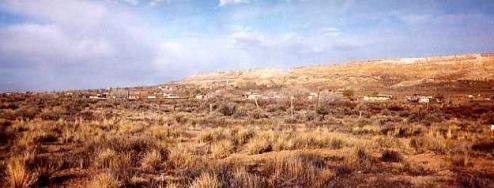Native American Agriculture By: Joyce Kang
“Treat the earth well: it was not given to you by your parents; it was loaned to you by your children. We do not inherit the earth from our ancestors, we borrow it from our children.” -Native American Proverb
Early Agriculture

This photo from the Library of Congress depicts a group of Native American farmers from the Hopewell tribe. Hopewell Indians grew a variety of crops, and this picture shows them harvesting native plants. One can see how the Native American practice of planting in rows saved space on farms.
Even before European colonization, Native Americans utilized many farming techniques. Once such technique was the system of crop rotation, sequencing different crops to plant on the same field over several seasons. This practice benefited farmers because it helped to preserve the nutrients in the soil and prevent soil erosion. Native Americans also used a technique where rows of crops were placed closely together. This practice saved space and made the most out of the land. For fertilizer, farmers used fish heads. When the crops were planted, farmers would place a fish head alongside each row. These heads acted as natural fertilizer and provided nutrients for the plants to grow. Native American farmers also burned weeds and brush to recycle nutrients back into the soil. These many agricultural practices helped Native Americans successfully grow and harvest many crops. When white settlers began colonizing in the Americas, they often relied on the wisdom and agricultural knowledge of the Native Americans who already lived there.
Even before European colonization, Native Americans utilized many farming techniques. Once such technique was the system of crop rotation, sequencing different crops to plant on the same field over several seasons. This practice benefited farmers because it helped to preserve the nutrients in the soil and prevent soil erosion. Native Americans also used a technique where rows of crops were placed closely together. This practice saved space and made the most out of the land. For fertilizer, farmers used fish heads. When the crops were planted, farmers would place a fish head alongside each row. These heads acted as natural fertilizer and provided nutrients for the plants to grow. Native American farmers also burned weeds and brush to recycle nutrients back into the soil. These many agricultural practices helped Native Americans successfully grow and harvest many crops. When white settlers began colonizing in the Americas, they often relied on the wisdom and agricultural knowledge of the Native Americans who already lived there.
Native American Crops
The most important Native American food crop was Indian corn, or maize. The majority of tribes grew at least some of this corn, and those who did not grow it themselves traded with other tribes for it. Apart from corn, Native Americans also grew a wide variety of other crops: tobacco, pumpkin, beans, squash, sunflowers, goosefoot, cotton, wheat, barley, oats, hay, hemp, and medicinal plants.
Land Tenure Before Reservations
Most Native Americans practiced communal ownership, where title to a general territory was a group right, not an individual right. Whole villages would claim ownership over a certain area of land, and other communities would recognize this ownership. Within each community, some individuals, usually determined by family lineage, had control over small gardens and fields. In present-day eastern United States, the eldest woman of each family had overall control of this land, and each lineage controlled it as long as the land was continually put to use. In the Southwest, men usually had overall control over the land, and because the dry climate reduced the available arable land, claims remained valid even when the land was not in use.
Modern Farming- Reservations
Modern Native American agriculture has suffered because the majority of the tribes have been forced onto reservations in the western part of the United States. These reservations, extremely arid regions, are very unsuitable for traditional agriculture. During the 1900’s, the dry climate of the West and federal Indian policies slowed the development of commercial agriculture on most reservations. Low financial support by the federal government also prevented the development of irrigation, which further set back Native American agriculture. Many Native Americans in the Southwest, therefore, relied on raising livestock for their income. By 1950, Native American farmers averaged only $500 of income annually compared to white farmers, who earned $2,500. They could not meet their own basic needs through farming because they did not have the necessary resources for successful agriculture. Also, Native American farmers could not qualify for loans, so few had enough land to become commercial farmers. Therefore, most Native Americans continued to lease their lands to white farmers and cattlemen. Today, only a little over 10,500 Native Americans remain farmers, and only about 3,500 of them earn more than $10,000 a year from farming.

This photograph by Andrew Lewis depicts the dry and arid climate of the Hopi Reservation in Arizona. This picture really shows how the climate of western United States greatly hinders agricultural production on reservations.
